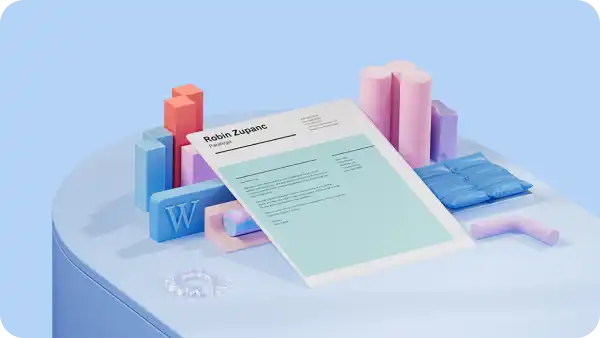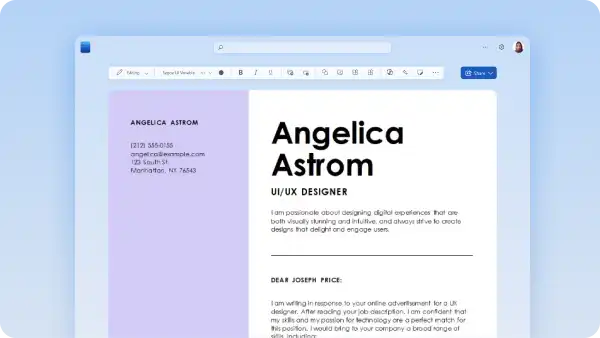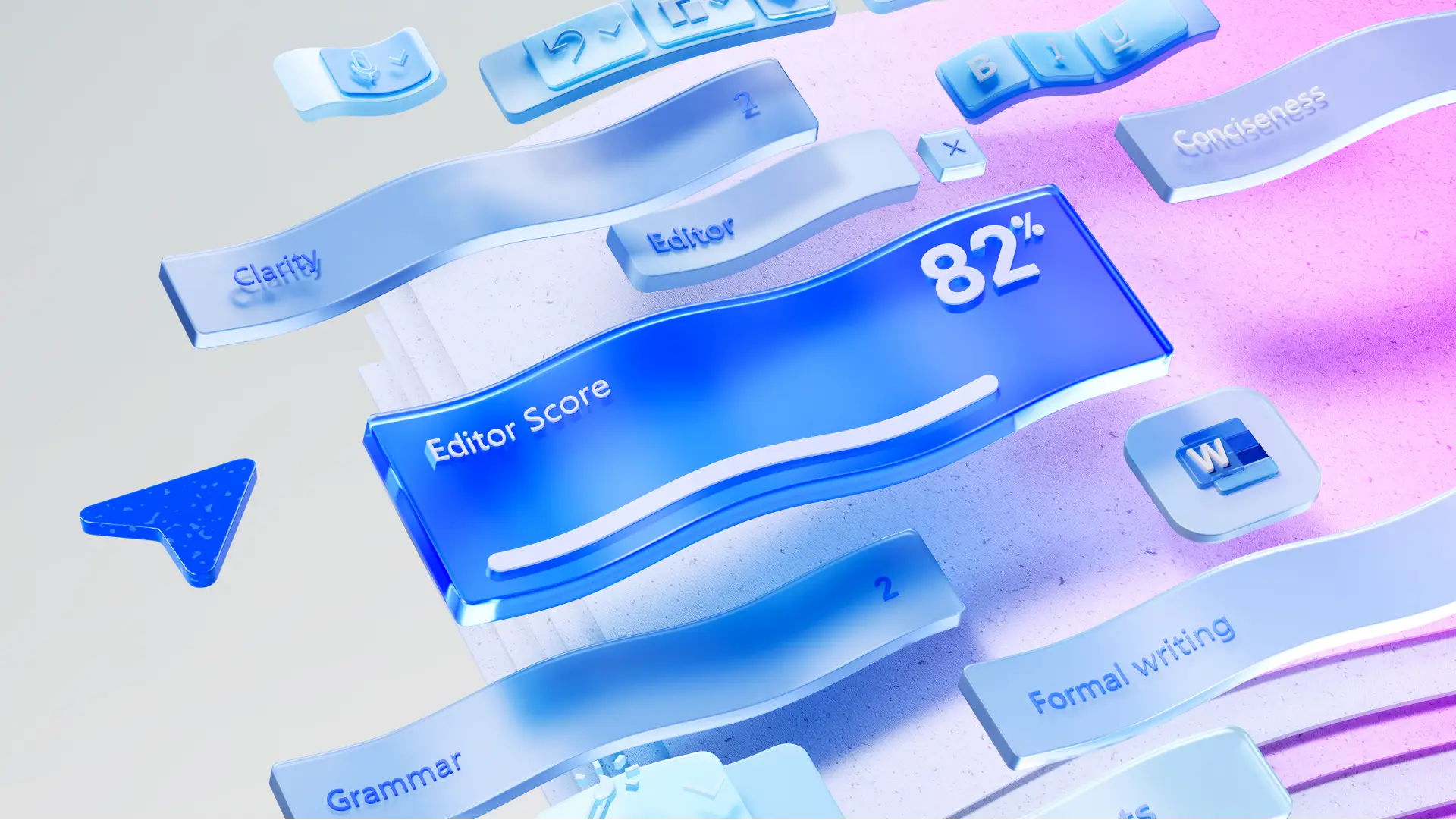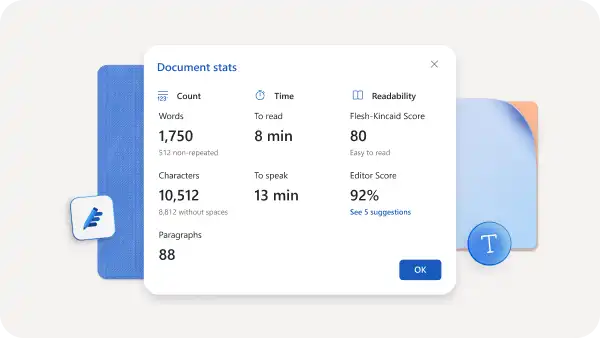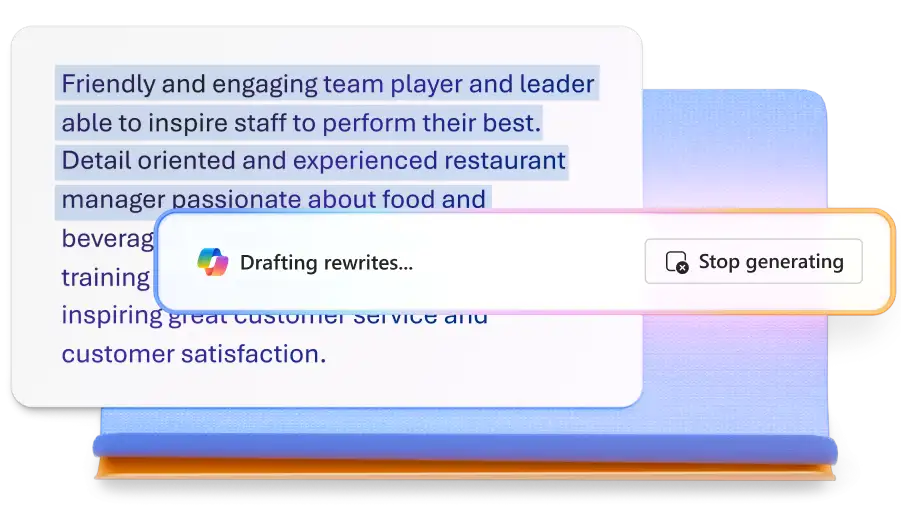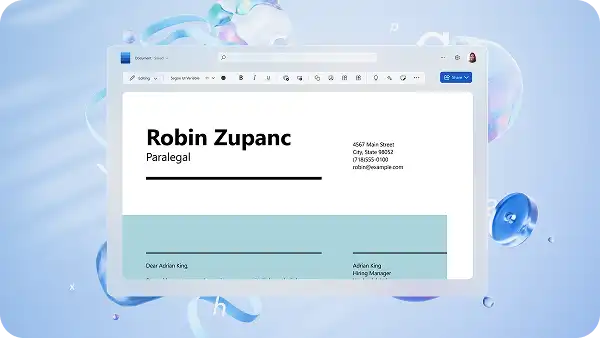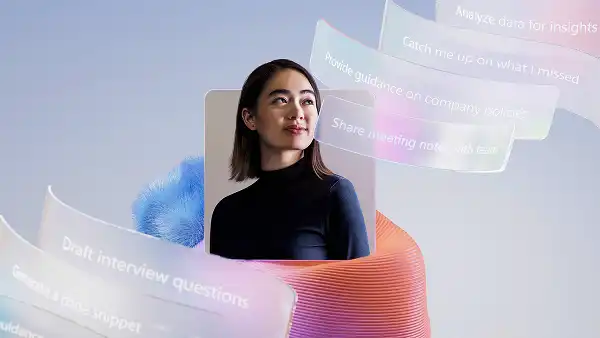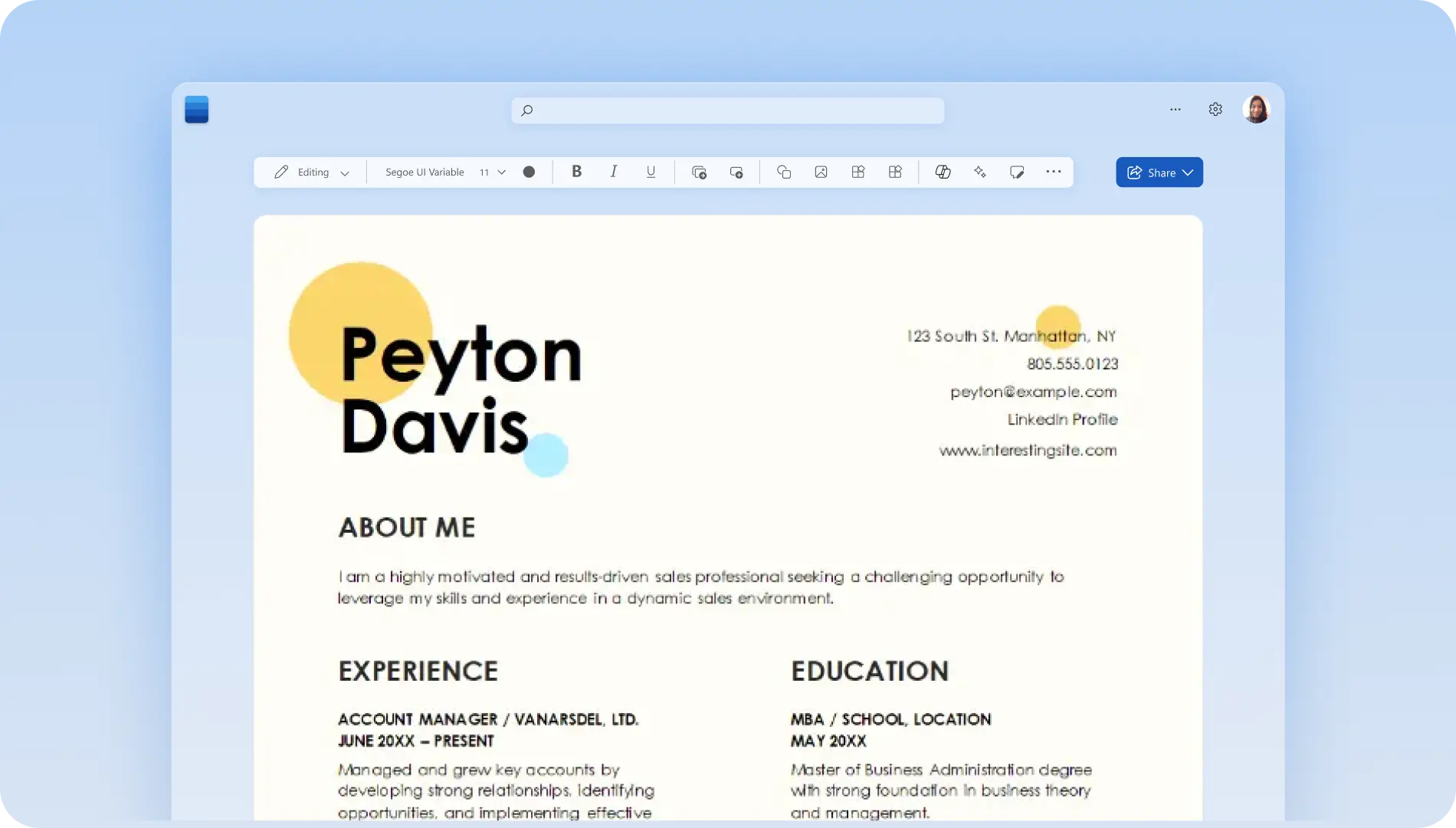On this page
Write a professional cover letter that showcases your skills, personality, and stands out from competitors using the cover letter generator by Microsoft Word.
No matter the career path or job title, creating a polished cover letter to accompany a resume is the best way to make a good first impression. Write a document from scratch, or start with a ready-to-use cover letter template in a range of different styles. Easily edit cover letter templates and examples with your personal information and details, then customize fonts, colors, and images in a few clicks.
Read on to learn how to write a cover letter for a job, while exploring what to include in a cover letter. Find formatting tips and the best ways to use Copilot in Word to write a cover letter for you.
What is a cover letter?
A cover letter is a one-page document that matches your resume or CV when applying for a new job, career change, or internship. The document introduces yourself through a brief summary including key qualifications, skills, experiences, and any suitable information that you would like potential employers or hiring managers to know straight away. It's a great place to convey your personality, highlighting that you're a good cultural fit for the role, as well as mentioning work ethic.
Different resume formats can also benefit from an assisting cover letters. The document adds valuable context specially for a combination resume, or if an applicant is changing careers as the resume may not have enough Applicant Tracking System (ATS) keywords or aligned work experience for the role.
What to include in a cover letter
Header
Include all important contact information in the header like the date, the full name of whom the cover letter is addressed to, an address, email address, and a mobile number if needed.
Greeting
Address a cover letter to the person of interest. If you know the name of the hiring manager, address the cover letter to them. If you don’t know the hiring manager’s name, avoid referring to a gender and use a modern generic term, team, or job title if possible. You can also research on LinkedIn or the name of the job post owner for specific personalization.
Cover letter greeting example: address a cover letter to ‘the recruiter’ the ‘hiring manager’ or the evergreen ‘to whom it may concern.’
Opening paragraph
Share a brief paragraph about why you're applying for the position, what interests you about the role or company, and how the job matches your career aspirations. We recommend avoiding any generic turn of phrase and instead getting straight to the point. This is also the best place to mention if you have been referred for this role by someone.
A bad cover letter opening paragraph example: I am applying for the [job title] at [company]. I saw this job advertised and thought it looked like something I’d like to do. I have a degree in [degree] and some existing experience so I think I could do this job very well. Please find my resume attached below.
A good cover letter opening paragraph example: as a highly skilled [job title] with over [number of years] of experience, I am eagerly writing to express my interest in the [job title] position at [company]. This position has captured my attention and excites me because [what interests you]. With my knowledge in [relevant industry] and bachelor's degree in [relevant industry], I am very confident in my ability to successfully contribute to your team.
Body paragraph
Share everything you know about what the company needs, their values, and recent achievements that align closely with your own. Explain confidently why you would be a good fit for their team, sharing all relevant skills, experiences, and career achievements. Make sure to showcase why you want to work for the company, as well as sharing any a career stories that align with benefiting the company.
A bad cover letter body paragraph example: I have similar values to your company and experience in working in [job title]. I would be a good fit for your team because I work well in a team and have good communication skills. I would like to work for [company] because I believe I can do the job well if given the opportunity.
A good cover letter body paragraph example: I have advanced knowledge in [list all related skills] due to my past [number of years] experience with [company]. I contributed to several initiatives that resulted in significant improvements, growth, and productivity by [percentage]. For example, [share a standout achievement and success metric]. These core priorities and skills have equipped me with the experience and passion I require to be a part of your [company]. I would like to work for [company] because [explain why] and truly appreciate the opportunity to be a candidate for the [job title].
Closing paragraph
Conclude cover letters with a strong call to action (CTA) and thank the hiring manager or recruiter for their time.
Cover letter closing paragraph example: I look forward to the possibility of discussing this exciting opportunity with you further in more detail.
Salutations
Sign off a cover letter by sharing thanks and signing with your full name.
Tips for writing a great cover letter in 2026
Personalize cover letters to each application using Copilot in Word
We recommend creating a new cover letter for each job application or editing an existing cover letter template created with Word. Make sure to adjust an existing cover letter with specific requirements for the new role and company.
Copilot in Word can also help you tailor cover letters using AI by analyzing the job description and company details. All you have to do is chat with Copilot and provide specific information about the new role and company, and Copilot will suggest personalized content that aligns with the company requirements and culture.
Use a professional tone and proofread documents with AI
Ensure that cover letters are written in a formal, professional, or casual tone, using document editor in Word. Access the complete range of editing features from anywhere, including proofreading, AI rewriting tools like grammar checker and spell check, word count, and more.
Use Copilot in Word to get intelligent editing suggestions on cover letters if you’re a Microsoft 365 subscriber. Copilot can improve existing cover letters with quick tools like AI rewriting, making it shorter, and coaching suggestions.
Avoid generic wording and be specific
When writing a cover letter, stay away from using generic or vague wording, terms, and language that isn’t role specific to an application. Use the job description language to mention specific examples of experiences and past opportunities.
Cover letter sentence example: over the past [number years], I've worked on [specific use case or problem] to help positively drive the revenue of [mission] by [percentage amount].
Copilot in Word can assist in identifying and replacing generic phrases with specific examples and details. By providing information about your experiences and achievements in the Copilot chat box, AI can help you create a cover letter that stands out and recognized by ATS software.
Keep cover letters short and accurate
Keep cover letters between 250 – 400 words to avoid adding too much information within the document. You can check document word count, time to read, speak, readability, number of characters, and other valuable insights at the document stats function inside Word.
Add any other information to give context
If you have any further information that can provide context around your current role, job hoping, or gaps in employment, don’t forget to add this to your cover letter. Any valuable information you can provide hiring managers or new employers is essential to helping land a new job.
Proofread cover letters
Proofreading can ensure document clarity, accuracy, consistency, and detect any grammatical or spelling corrections that need to be made before sending a cover letter. Use the document editor to refine cover letters or explore the AI rewriter to assist writing.
Copilot can review cover letters and documents for grammar, spelling, and punctuation errors with AI-technology. You can explore Copilot suggestions for improving clarity and readability, ensuring cover letters are polished and professional before sharing.
Start making a cover letter to assist your resume with free and professional templates using the cover letter generator by Word.
Learn more about writing quality resumes to assist cover letters by reading how to write a resume with AI in Word or explore the best cover letter formats here.
Frequently asked questions
Can I customize a cover letter for free in Microsoft Word?
Effortlessly customize and save a professional-looking cover letter template in Word for free. Choose from a range of different career paths, styles, color palettes, fonts, and layouts to personalize then download with no cost. You can also find ready-to-use resume templates to assist any cover letter for free.
Can I download Word cover letters?
Users can easily download a cover letter in Word for free. Download a copy and create a copy online, or download a cover letter as a PDF, ODT, or export to PowerPoint. Whether you’re creating a cover letter from scratch, personalizing a template, or want to download a resume template or cover letter template as is, there are no limits to how many downloads you can make.
Can I upload my cover letter to Word online?
All cover letters created in your Microsoft 365 account can be accessed on Word online. For example, if you create a cover letter using a template within the Word desktop app, you can access this document via Word online as well.
